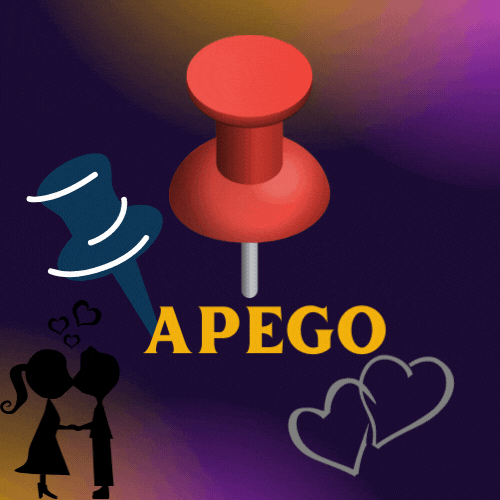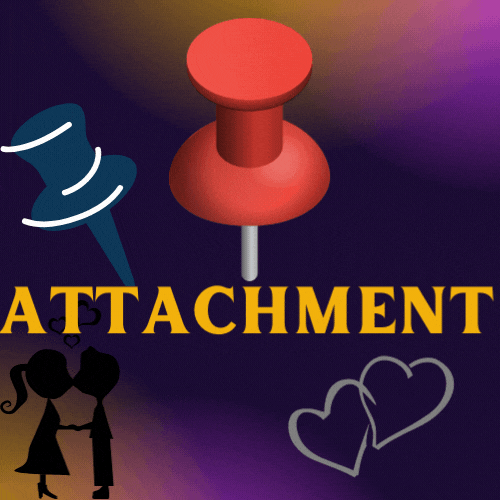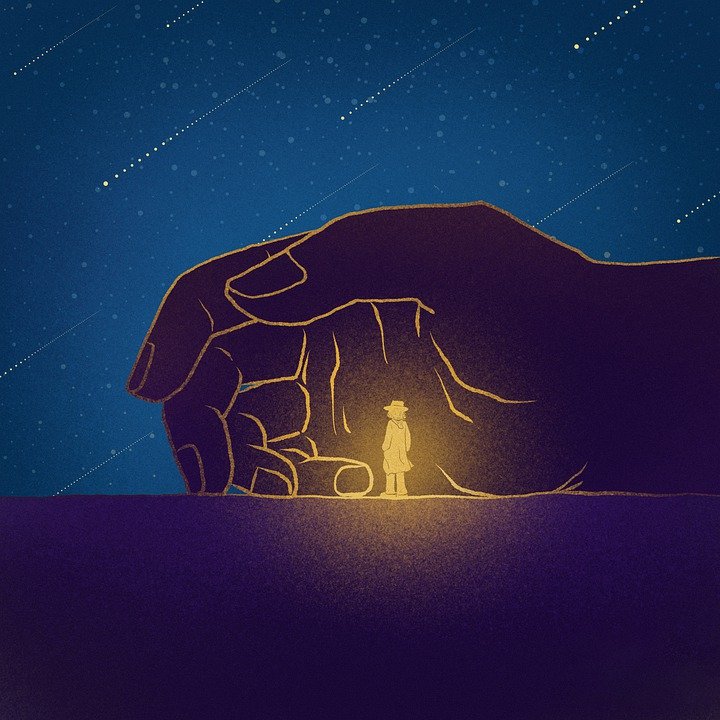

En los últimos años se han dado a conocer muchas situaciones que vivimos los seres humanos por el manejo de las emociones y sentimientos. Han salido al aire, manifestando diferentes formas de cómo manejar situaciones que de una u otra forma afectan nuestro estado emocional y salud física.
Con el crecimiento en la diversificación de conocimientos, han surgido prácticas de cómo ayudar a otras personas como coach en emociones, terapistas que se preparan en el mundo de el conocimiento del mundo interno para descubrir fortalezas y debilidades en el ser humano y como puede manejarlas para tener un buen vivir. Esto es algo así de crear conciencia hacia el mundo de emociones que albergamos en nuestro mundo interno.
En diferentes instancias se ha manejado este tema conjuntamente con el de la espiritualidad, la relación que hay con la Fuente y cómo conectar con ella.
¿Por qué el Apego? Se dice mucho del amor, de la tristeza, la rabia...pero ¿que pasa con el apego?.
Como seres intelectuales nos gusta tener la prueba científica de todo lo que está a nuestro alrededor, por ello traigo esta vez al psicólogo John Bowlby quien en (1979) presenta la investigación más profunda realizada en torno a este tema. Considerando que los orígenes de esta teoría se remontan a los estudios de Freud sobre el tema del amor. Conocer un poco de historia no está demás para orientarnos con mayor peso cuando nos presentan en nuestra vida diaria esta teoría.
Es visto el apego como un factor importante en el desarrollo del ser humano y en el comportamiento del mismo.
John Bowlby , presenta 4 Características de la teoría ; en ellas se menciona:
1. Mantenimiento de proximidad
Lo define este investigador como el deseo de estar cerca de aquellas personas con las que se había creado un vínculo.
2. Refugio seguro en el que buscar consuelo
y seguridad ante el peligro de una amenaza.
y seguridad ante el peligro de una amenaza.
Es una figura utilizada para sentir seguridad y comodidad ante aquellas situaciones que puedan representar una amenaza o un miedo. En el caso de los niños buscan refugio en su madre o padre o la persona más cercana que han tenido.
3. Base segura desde la cual explorar el mundo
Esta es una característica relacionada con la capacidad del niño de sentir que puede explorar el ambiente circundante sin peligros, gracias al apego. Cuando está acompañado y sabe que alguien está con él su seguridad es inmensa.
4. Angustia por separación
La define no como característica generada por el sentimiento de apego, sino por su ausencia. Al ver la ausencia de una persona surge la angustia de no tenerla más a su lado.
Las investigaciones de John Bowlby, lo llevaron a concluir cuatro etapas del apego :
1-Fase de preapego
Considera que se da en las primeras semanas después del nacimiento. Madre/hijo.
2-Fase de formación
Después de transcurridas las seis semanas de la fase de preapego y tiene una duración de aproximadamente ocho meses, en este etapa se puede apreciar cuando el niño es separado de su madre, a través de llanto se determina.
3-Fase de apego
De acuerdo al investigador es a partir de esta etapa que se forma un verdadero vínculo de apego. Se nota cuando el niño es separado de su madre, experimenta molestia porque no quiere separarse de la madre o padre...esto es algo que sucede muy a menudo en los llamados maternales que se reciben niños a partir de 6 meses a 1 año para sus cuidados mientras sus padres realizan diferentes actividades. En mi caso, lo sufrí mucho con mi hija, quedaba llorando y me iba con el corazón destrozado. Sentía que la perdía o me dolía su llanto.
4-Fase de relaciones recíprocas
La determina como la última fase de apego y comienza a desarrollarse desde los veinticuatro meses. En esta etapa como el niño ha desarrollado parte del lenguaje puede generar representaciones mentales de su madre.

Imagen de la autora, editada con los recursos propios de Canva. Junio,2022
El Apego en el Adulto

En esta etapa cuando ya el ser ha pasado por la etapa de la infancia y la adolescencia que son etapas de mucha inestabilidad entre padres/hijos por todas las características de cada una de ellas.
Se dan casos de adultos jóvenes toman la decisión de formar pareja pero al mismo tiempo el apego hacia sus padres o hacia uno de ellos no le permite despegarse lo que trae conflictos en su relación de pareja.
En estos casos cuando no hay suficiente conocimiento al respecto se forman cadenas de malos entendidos, situaciones desagradables por no saber manejarse en relación a este tema.
Aquí entran en escena los terapeutas, psicólogos quienes a través de su formación pueden colaborar con las personas que recurran a ellos. Reconocer el apego es un conocimiento justo porque de verdad que como padres queremos que nuestros hijos siempre estén físicamente con nosotros; reconocer que es ley de vida, aceptar colabora mucho de parte de cada uno. Es salud emocional, mental, espiritual , física para todos los involucrados.
Mirar esas distancias como caminos de vida que cada quien debe recorrer y vivir sus experiencias sean de agrado o no.
Siempre he manifestado que el estudiar nuestro mundo interno, reconocer cada emoción es un trabajo individual, consciente, disciplinado para obtener resultados positivos, que el ser humano sienta libertad al tener que seguir su vida separado de las personas que ama, que es algo natural para no sentir culpas hacia estas decisiones.
Dirección Web para apoyar el post
https://www.awenpsicologia.com/teoria-del-apego/
Traductor DeepL
Best regards

Image by the author, edited with Canva's own resources. June,2022
https://www.awenpsicologia.com/teoria-del-apego/
Traductor DeepL




In the last few years, many situations that we human beings experience due to the management of emotions and feelings have become known. They have been aired, showing different ways of how to handle situations that in one way or another affect our emotional state and physical health.
With the growth in the diversification of knowledge, there have emerged practices of how to help other people as coaches in emotions, therapists who are prepared in the world of knowledge of the inner world to discover strengths and weaknesses in the human being and how to manage them to have a good life. This is something like creating awareness towards the world of emotions that we harbor in our inner world.
In different instances this subject has been handled together with spirituality, the relationship with the Source and how to connect with it.
Why Attachment? Much is said about love, sadness, anger... but what about attachment?
As intellectual beings we like to have the scientific proof of everything that is around us, that is why I bring this time the psychologist John Bowlby who in (1979) presents the most profound research done on this subject. Considering that the origins of this theory go back to Freud's studies on the subject of love. Knowing a little bit of history is not superfluous to orient ourselves with greater weight when we are presented with this theory in our daily life.
Attachment is seen as an important factor in the development of human beings and in their behavior.
1. Maintenance of proximity.
John Bowlby, presents 4 characteristics of the theory; in them he mentions:
This is defined by this researcher as the desire to be close to those with whom a bond has been created.
2. Safe haven in which to seek comfort and security in the face of the danger of a threat.
It is a figure used to feel security and comfort in situations that may represent a threat or fear. In the case of children, they seek refuge in their mother or father or the closest person they have ever had.
3. Secure base from which to explore the world
This is a characteristic related to the child's ability to feel that he/she can explore the surrounding environment without danger, thanks to attachment. When he is accompanied and knows that someone is with him, his security is immense.
4. Separation anxiety
He defines it not as a characteristic generated by the feeling of attachment, but by its absence. Seeing the absence of a person gives rise to the anguish of no longer having him/her by his/her side.
1-Pre-attachment stage
John Bowlby's research led him to conclude four stages of attachment:
He considers that it occurs in the first weeks after birth. Mother/child.
2-Formation phase
After the six weeks of the pre-attachment phase and lasts approximately eight months, in this stage it can be seen when the child is separated from its mother, through crying is determined.
3-Attachment phase
According to the researcher, it is at this stage that a true attachment bond is formed. It is noticed when the child is separated from its mother, it experiences discomfort because it does not want to be separated from the mother or father...this is something that happens very often in the so-called maternity homes that receive children from 6 months to 1 year old for their care while their parents carry out different activities. In my case, I suffered a lot with my daughter, she was crying and I left with a broken heart. I felt I was losing her or I was hurt by her crying.
4-Phase of reciprocal relationships
She determines it as the last phase of attachment and begins to develop from twenty-four months onwards. In this stage, as the child has developed part of the language, he can generate mental representations of his mother.

Image by the author, edited with Canva's own resources. June,2022
Adult Attachment

At this stage, when the being has already passed through childhood and adolescence, which are stages of great instability between parents/children due to all the characteristics of each one of them.
There are cases of young adults who make the decision to form a couple but at the same time the attachment to their parents or to one of them does not allow them to detach, which brings conflicts in their couple relationship.
In these cases, when there is not enough knowledge on the subject, chains of misunderstandings and unpleasant situations are formed because of not knowing how to handle this issue.
This is where therapists and psychologists come into the picture, who through their training can collaborate with the people who turn to them. To recognize the attachment is a fair knowledge because truly as parents we always want our children to be physically with us; to recognize that it is a law of life, to accept it collaborates a lot from each one of us. It is emotional, mental, spiritual and physical health for all involved.
To look at these distances as paths of life that each one of us must travel and live our experiences whether we like them or not.
I have always manifested that studying our internal world, knowing each emotion is an individual, conscious, disciplined work to obtain positive results, that the human being feels freedom when having to follow his life separated from the people he loves, which is something natural to not feel guilt towards these decisions.
Web address to support the post
https://www.awenpsicologia.com/teoria-del-apego/
Translator DeepL
Dividers Source

https://www.awenpsicologia.com/teoria-del-apego/
Translator DeepL
Dividers Source


The rewards earned on this comment will go directly to the people( @mercmarg ) sharing the post on Twitter as long as they are registered with @poshtoken. Sign up at https://hiveposh.com.
Estas recibiendo un voto por parte del proyecto "Sound Music" (@music1sound) y este post fue seleccionado para el reporte de curación diaria. Contáctenos para saber más del proyecto a nuestro servidor de Discord. Si desea delegar HP al proyecto: Delegue 5 HP - Delegue 10 HP - Delegue 20 HP - Delegue 30 HP - Delegue 50 HP - Delegue 100 HP.
Gracias
Me gusta leer para mantener informada, las implicaciones del apego son muy interesantes, gracias por compartirlas
Gracias @crisch23
🤪💃❤️